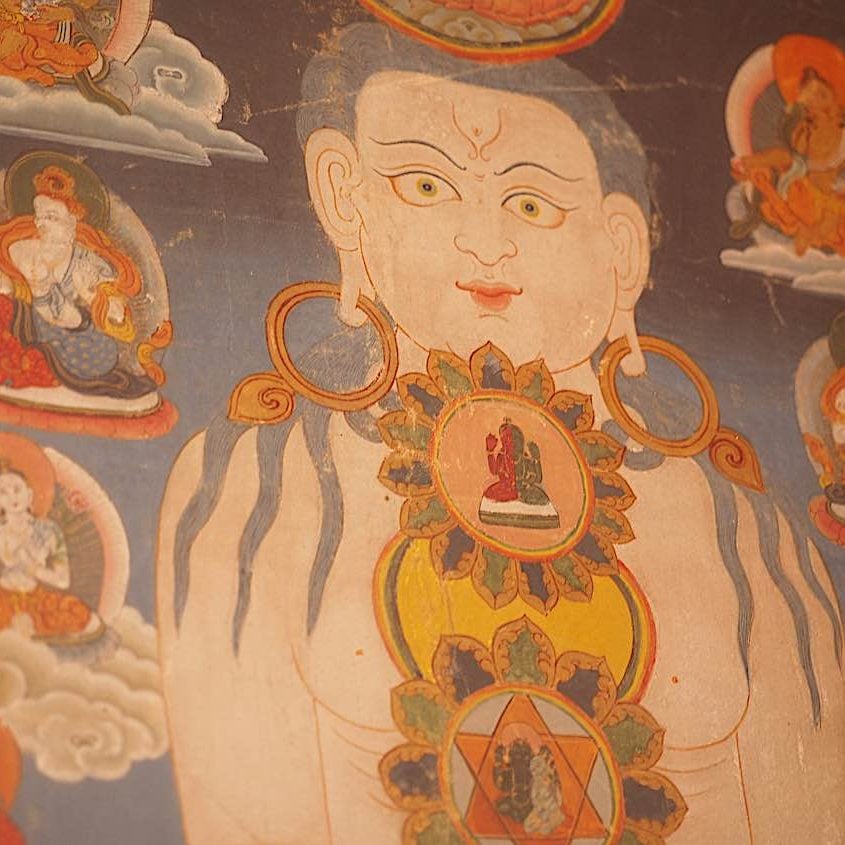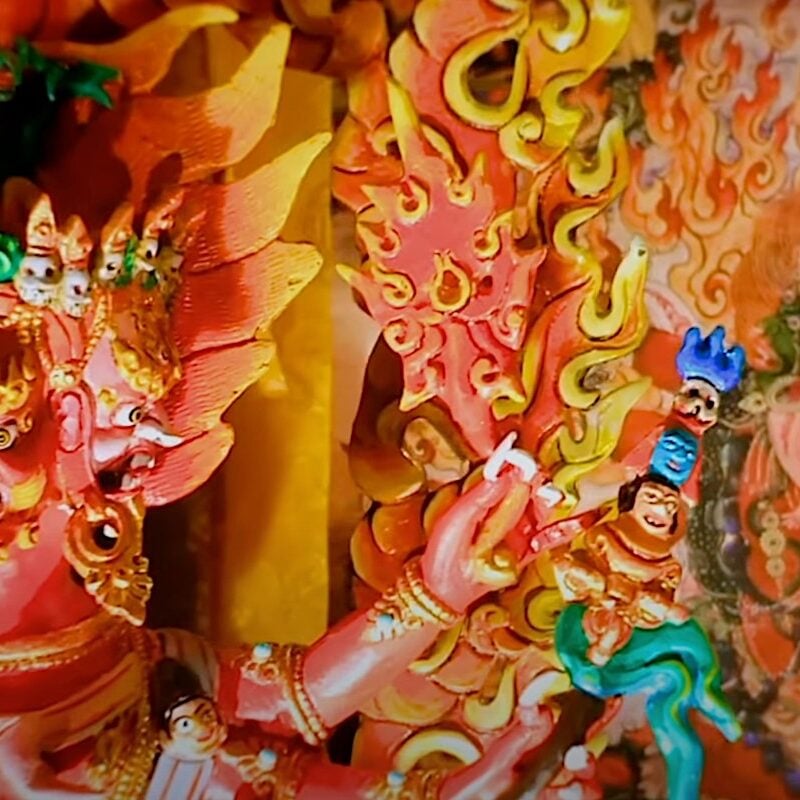Celebrating Loving Kindness on Maitreya Day: Significance and Traditional Practices to Start the Lunar New Year Celebrating the Buddha-to-Come
From “ringing the bell 108 times” as a ceremony, to great festivals of light and offerings, Lunar New Year marks the special day for the “Buddha to Come” Maitreya. On this day, we celebrate with loving-kindness and generosity — to honor his name, which translates as “loving kindness” (Maitri). He is so loving and kind, he is often just called “loving gentle friend.”
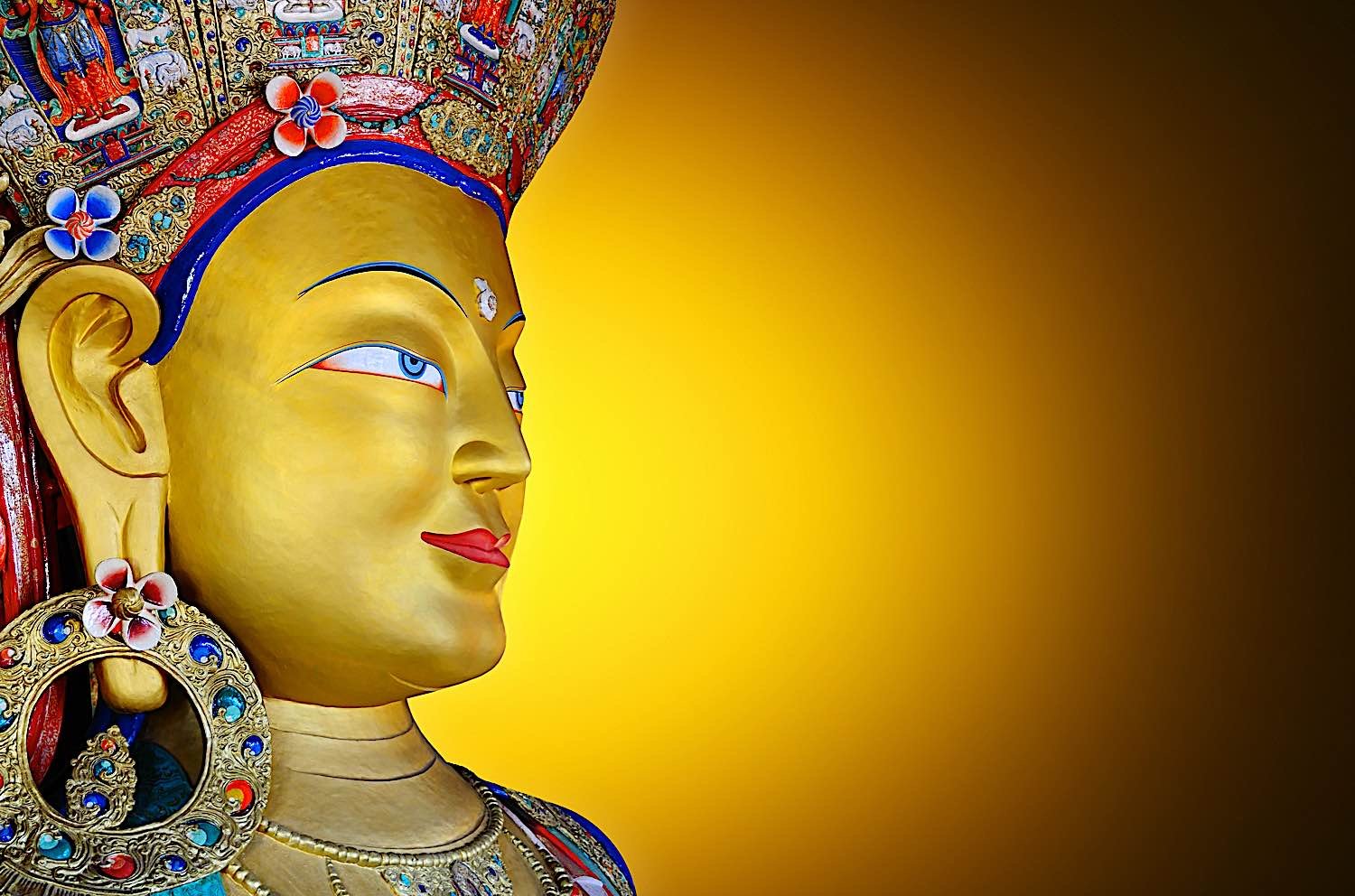
Especially important on His day is offerings, charity, supporting friends and Sangha and helping others with loving-kindness. Acts of loving-kindness are praising Maitreya, our kind Noble Friend.
Maitreya is foretold in Samyutta Nikaya’s Maitreyavimāna Sutta (Samyutta Nikāya 36.21). Mention of Maitreya is made numerous times throughout the Mahayana Sutras such as the Heart Sutra and Surangama Sutra, often reaffirming that Maitreya will be a Buddha who follows after Gautama Buddha. An entire chapter of the Lotus Sutra is dedicated to Maitreya.
In Mahayana traditions we celebrate Maitreya Day on lunar new year — this year February 10, 2024. This corresponds also with Losar in Tibetan tradition and Chinese New Year. There are many reasons to celebrate. In Tibetan tradition, we celebrate the 15 Days of Shakyamuni Buddha’s miracles, starting February 10 and going to the 24th — considered Holy Buddha Days with extra merit for practices and offerings. In Mahayana tradition, New Years marks Maitreya Day. For many of us, we celebrate both. This is a celebration of the Buddha who came, Shakyamuni Buddha, and the Buddha who is to come, Maitreya.
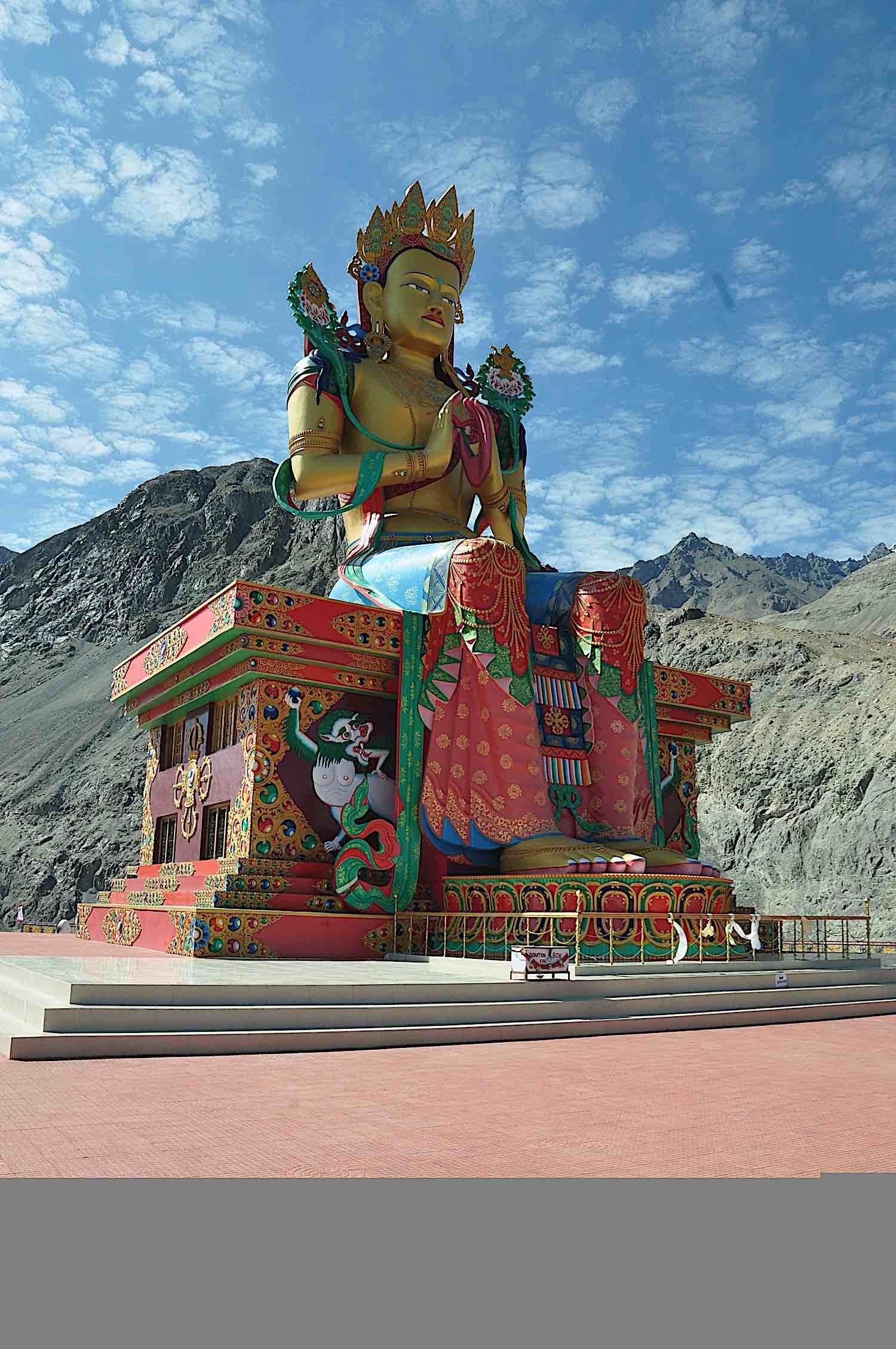
Who is Maitreya Buddha: The Future Buddha and His Teachings
Maitreya Buddha, also known as the Future Buddha, is a significant figure in the teachings (For a full feature on Maitreya, see>>). He is the Bodhisattva who embodies loving-kindness — the meaning of his name — and will appear on Earth in the future, demonstrate enlightenment, and teach the pure Dharma. We say “demonstrate enlilghtenment” in the same way as we traditionally think of Gautama Buddha. Gautama was a Bodhisattva, born to Earth, already Enlightened, but who demonstrated the way to Enlightenment for our benefit. In the same way, Maitreya, an Enlightened Bodhisattva, will also be born again on Earth — in the time of greatest degeneration — to bring about a period of great peace and understanding in the world, marking a new beginning.

Maitreya Buddha’s name is derived from the Sanskrit word “maitri”, which means friendship and kindness. Even though every Bodhisaattva embodies compassion, wisdom and metta, he is synonymous with them. His future teachings will likewise orbit around the cultivation of such qualities, promoting love, compassion, and understanding among people. Buddhists worldwide anticipate his arrival as it signifies a time of unbridled love, joy, and universal peace source.
In most Buddhist traditions, Maitreya Buddha is depicted as sitting with both of his feet on the ground, representing readiness and his imminent journey to Earth. This portrayal signifies his promise to appear at a time when Dharma will be forgotten, reminding us of the importance of maintaining our practice and upholding the teachings of Buddha.
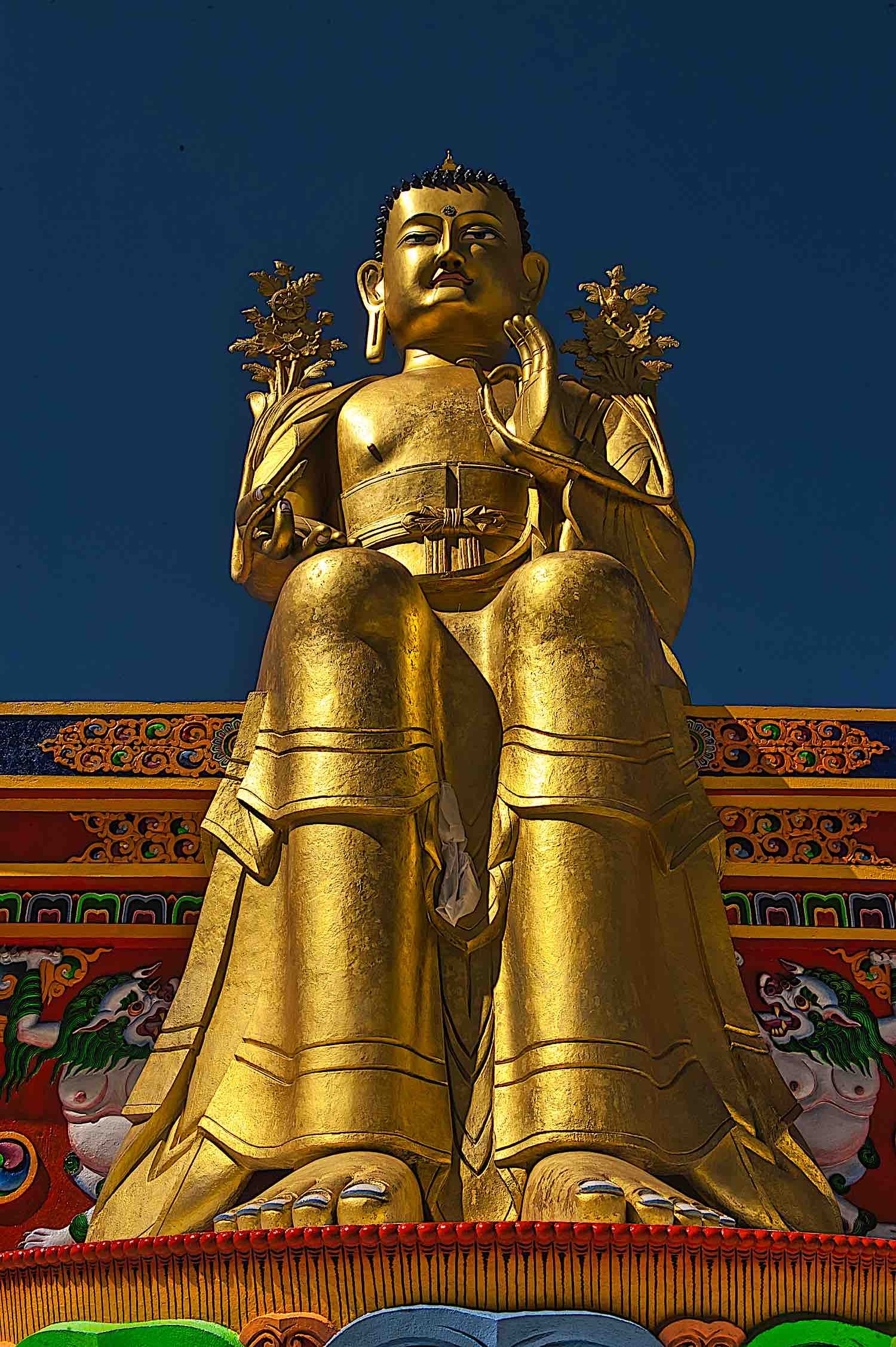
So, as we prepare to celebrate Maitreya Buddha Day, remember that it is an opportunity to reaffirm your commitment to embodying the values of love, compassion, and kindness that Maitreya Buddha represents. His best offerings are generous offerings, helping others, kindness, love, and following the precepts.
By carrying these values in your daily activities, you are essentially embodying the teachings of the Future Buddha, thereby contributing to the manifestation of a more loving and peaceful world.
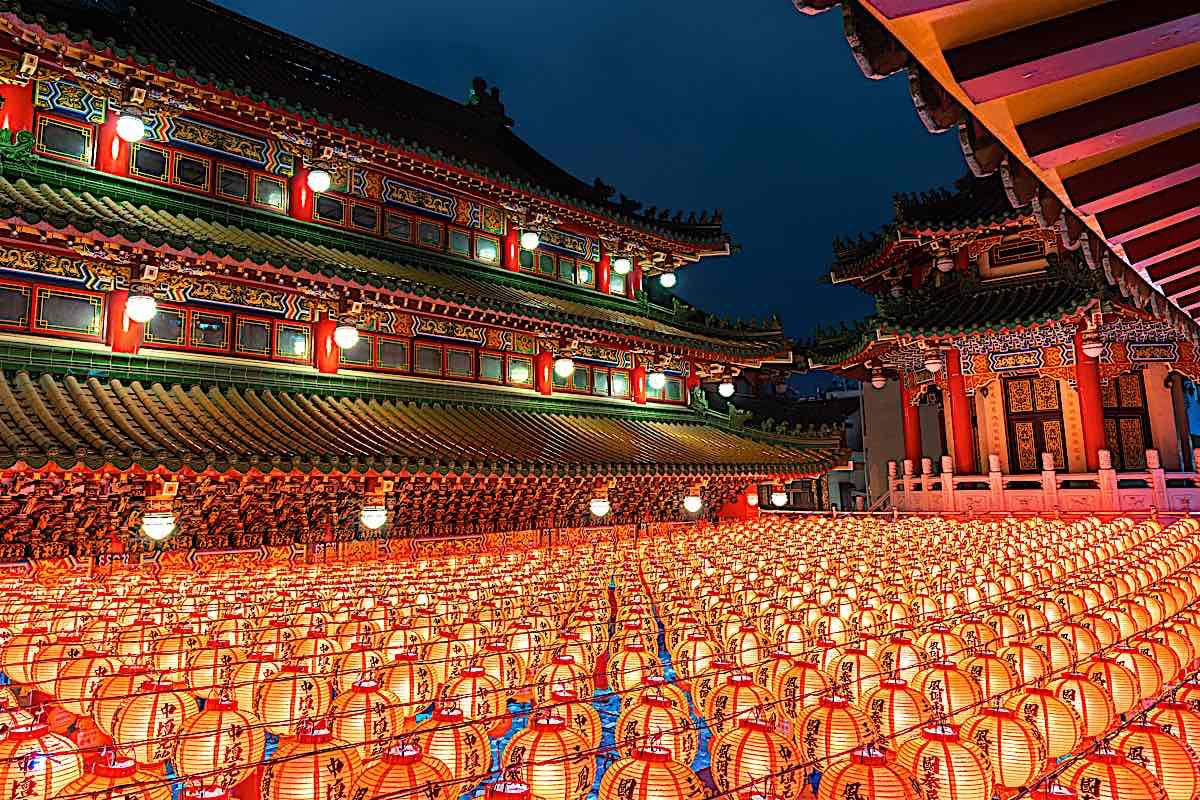
Starting the Lunar New Year with Maitreya Buddha Day: What Does it Mean?
To begin the Lunar New Year with Maitreya Buddha Day is symbolic of “new” — remembering he will be the future Buddha — and it signals our practice commitment to a year of loving kindness, wisdom and compassion. It is meant to embody a renewal of self and spirit, mirroring the renewal phase of the moon, and marking the start of the Lunar New Year.
Starting the year with Maitreya Buddha Day signifies a distinct departure from the past and a heartfelt intention to embrace the enlightened future that Maitreya Buddha signifies. Imagine it as stepping into a new chapter equipped with peace, compassion, and wisdom, three fundamental virtues embodied by this effervescent Buddha of the future.

Sharing in this celebration gives you an opportunity to immerse yourself in the teachings of Maitreya Buddha and align with his core message. The wisdom of Maitreya Buddha is aimed at unconditional love and the end of suffering through the attainment of enlightenment. Remember, this occasion isn’t just a day, it’s a platform to build a more loving and mindful year ahead. Starting your year this way can set a positive tone and orient your actions towards those of compassion and understanding.

Now, as you anticipate this spiritual event, you might be wondering how you can make the most of it. Well, the good news is, you’re already off to a promising start by understanding its significance. As we delve into the practices and techniques to celebrate Maitreya Buddha Day in detail, you’ll discover practical and meaningful ways to bring the essence of this celebration into your everyday life, even after the Lunar New Year has passed.
Traditional Practices to Welcome the Lunar New Year with Maitreya Buddha Day
Embracing Maitreya Buddha Day involves hearty observance of various traditional practices that not only pay homage to the Maitreya Buddha but also help to start the Lunar New Year on a positive note. These generosity-oriented practices are rooted in mindfulness, goodwill, and compassion—core principles associated with the teachings of Maitreya Buddha.
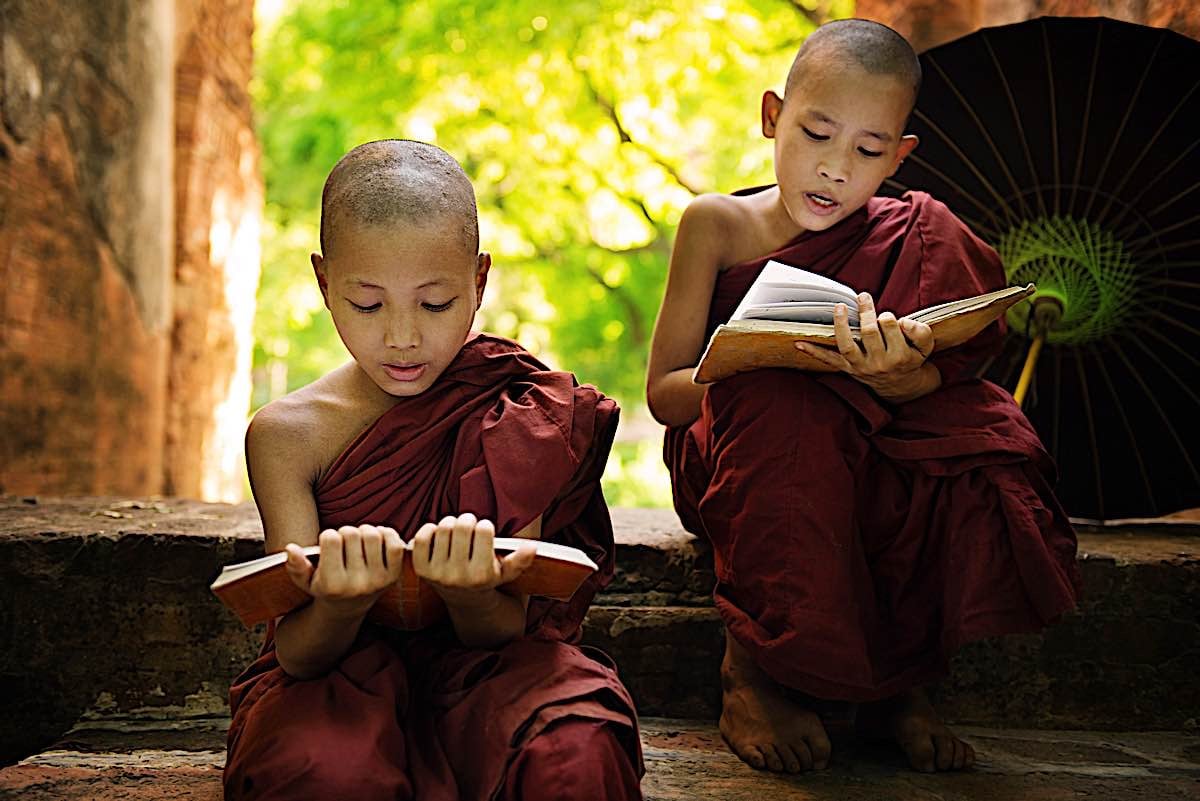
One such traditional practice is the recital of the Sutras mentioning Maitreya. This recitation is not only to invoke the blessings of Maitreya Buddha, and that he may guide us through wisdom and compassion in times of difficulty, but to generate wisdom and merit through sutra recitation.
Another form of veneration on this special day involves the distribution of food and other essentials to the poor, donating to Dharma causes and the Sangha, supporting any Noble Dharma activity, or any other charitable activities. The merit of this giving is multipled millions of times on Maitreya and Buddha Days, according to Lama Zopa Rinpoche, based on the Vinaya text Treasure of Quotations and Logic.
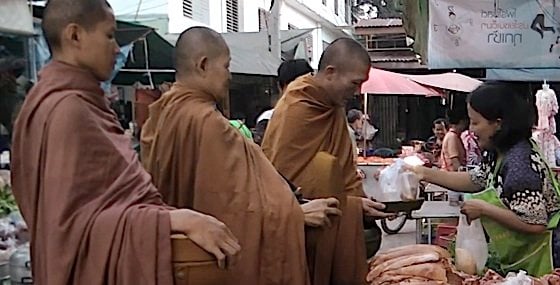
Maitreya is synonymous with love and we show this with our generosity. This selfless aid to those less fortunate resonates with Maitreya Buddha’s teachings of loving-kindness and generosity, encouraging each one of us to broaden our compassion and kindness towards all beings.
Traditionally, we welcome the shining light of Maitreya with candles and light, as much as possible. This is one reason, on New Year, you see fireworks, butterlamp offerings by the thousands and lanterns floating down the river, or across the sky.

How to reach Maitreya today
Although he will come as the “future” manifested Buddha in our world, according to the prophecies of Shakyamuni Buddha, he is “reachable” now through meditation, prayer, mantras and practice. Although he resides in Tushita Heaven — he is active as a compassionate Bodhisattva. Simply call his name, meditate on his form, chant his mantra, and his compassionate power will reach you.
His simplest prayer is to chant:
Come, Maitreya, Come!
Maitreya’s mantra
His seed syllable is maim.
Mai
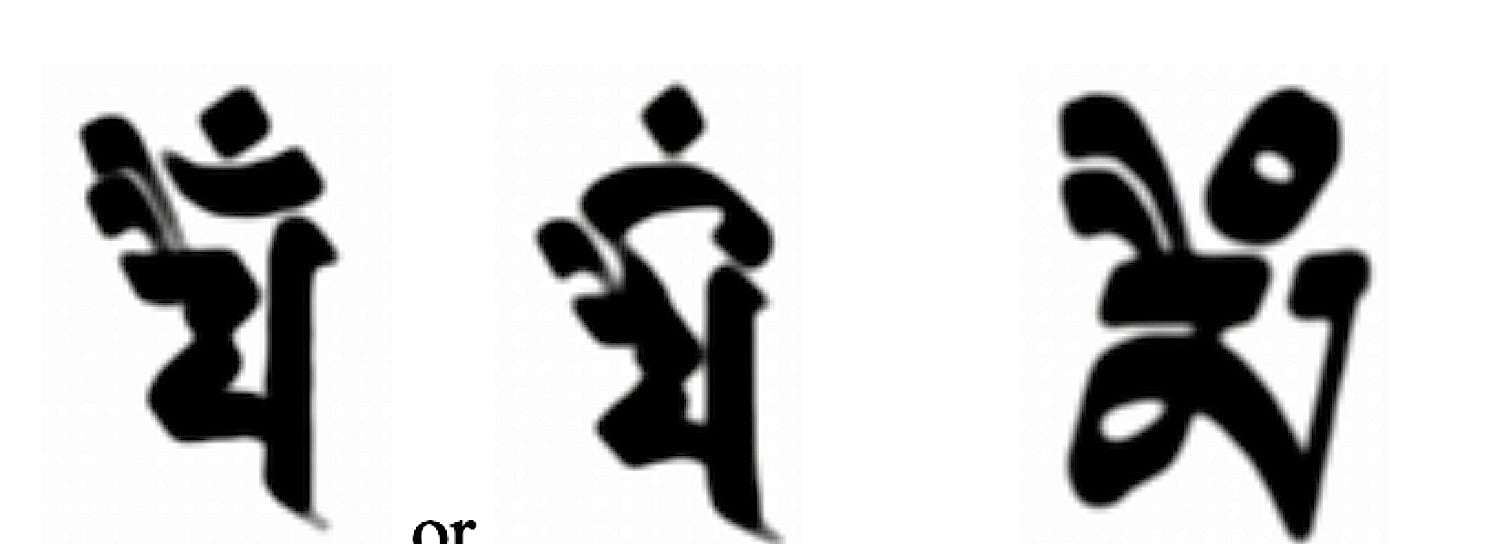
His mantra, with Tibetan and Siddham characters — from VisibleMantra.org — is:
oṃ mai tri ma hā mai tri mai tri ye svā hā
oṃ maitri mahāmaitri maitriye svāhā
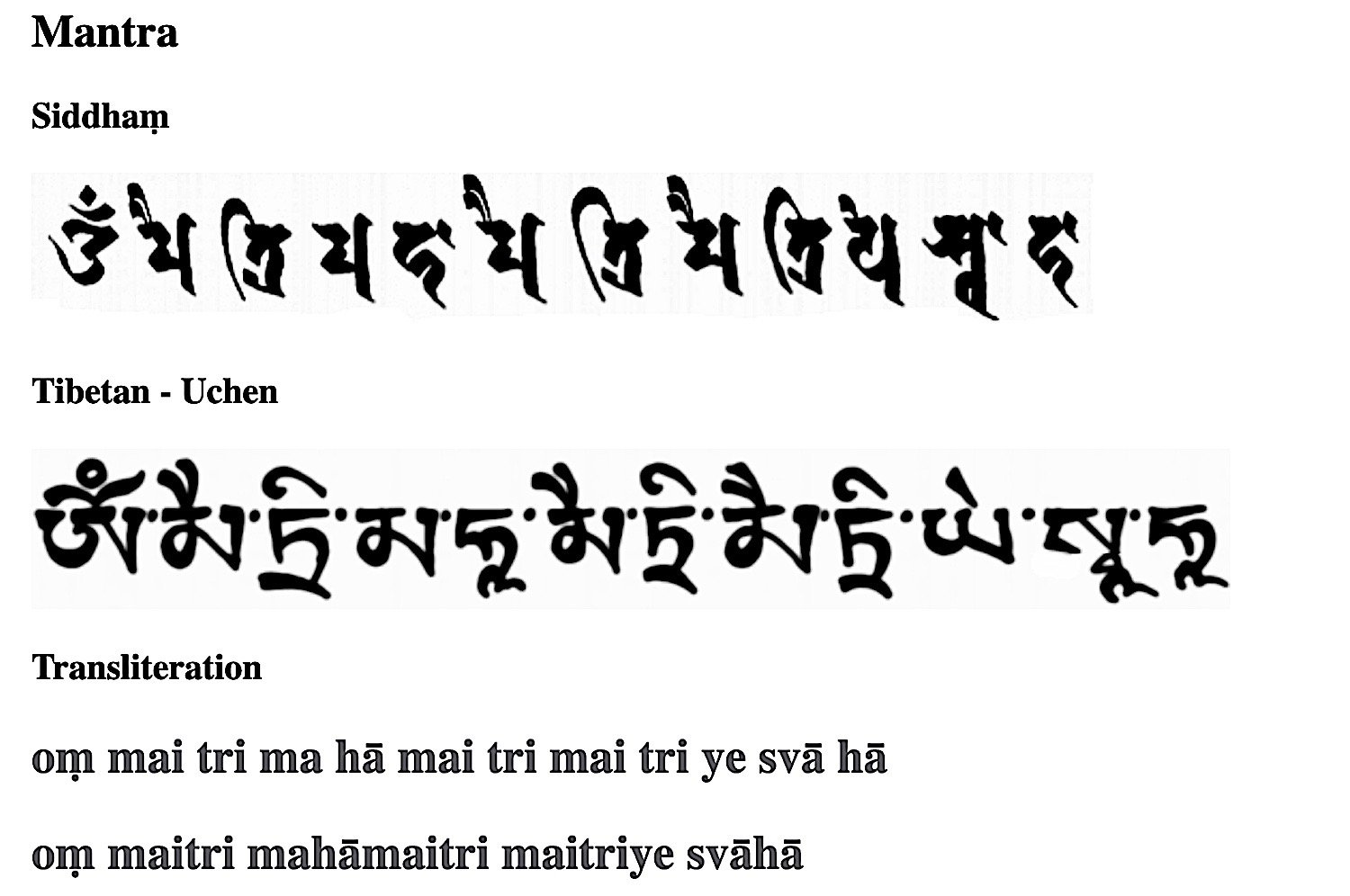
Especially profound is the Mantra of Maitreya Buddha’s Promise.
The Mantra of Maitreya Buddha’s Promise
(Arya-Maitrina-pratijna-nama-dharani)
The root mantra
NAMO RATNA TRAYAYA
Homage to the Three Jewels
NAMO BHAGAVATE SHAKYAMUNIYE TATHAGATAYA ARHATE SAMYAK SAM BUDDHAYA
Homage to the Lord Shakyamuni, Tathagata, Arhat, Completely Perfect Buddha
TADYATHA: OM AJITE AJITE APARAJITE
As follows: Om Invincible, Invincible, Unconquered
AJITAN CHAYA HARA HARA
Conquer the Unconquered, take, take [it]
MAITRI AVALOKITE KARA KARA
You Who Look Down with Friendliness, act, act
MAHA SAMAYA SIDDHI BHARA BHARA
Bring, bring the fulfillment of your great pledge
MAHA BODHI MÄNDA VIJA
Shake the seat of great awakening
MARA MARA ATMAKAM SAMAYA
Remember, remember [your] pledge for us
BODHI BODHI MAHA BODHI SVAHA
Awakening, awakening, great awakening, svaha
The heart mantra
OM MOHI MOHI MAHA MOHI SVAHA
Om fascinating, fascinating, greatly fascinating, svaha
The close heart mantra
OM MUNI MUNI MARA SVAHA
Om sage, sage, remember, svaha
More articles by this author

Guru Rinpoche is ready to answer and grant wishes: “Repeat this prayer continuously” for the granting of wishes

VIDEO: Vajrapani Vajra Armor Mantra: Supreme Protection of Dorje Godrab Vajrakavaca from Padmasambhava
Search
Latest Features
Please support the "Spread the Dharma" mission as one of our heroic Dharma Supporting Members, or with a one-time donation.
Please Help Support the “Spread the Dharma” Mission!

Be a part of the noble mission as a supporting member or a patron, or a volunteer contributor of content.
The power of Dharma to help sentient beings, in part, lies in ensuring access to Buddha’s precious Dharma — the mission of Buddha Weekly. We can’t do it without you!
A non-profit association since 2007, Buddha Weekly published many feature articles, videos, and, podcasts. Please consider supporting the mission to preserve and “Spread the Dharma." Your support as either a patron or a supporting member helps defray the high costs of producing quality Dharma content. Thank you! Learn more here, or become one of our super karma heroes on Patreon.
Lee Kane
Author | Buddha Weekly
Lee Kane is the editor of Buddha Weekly, since 2007. His main focuses as a writer are mindfulness techniques, meditation, Dharma and Sutra commentaries, Buddhist practices, international perspectives and traditions, Vajrayana, Mahayana, Zen. He also covers various events.
Lee also contributes as a writer to various other online magazines and blogs.








